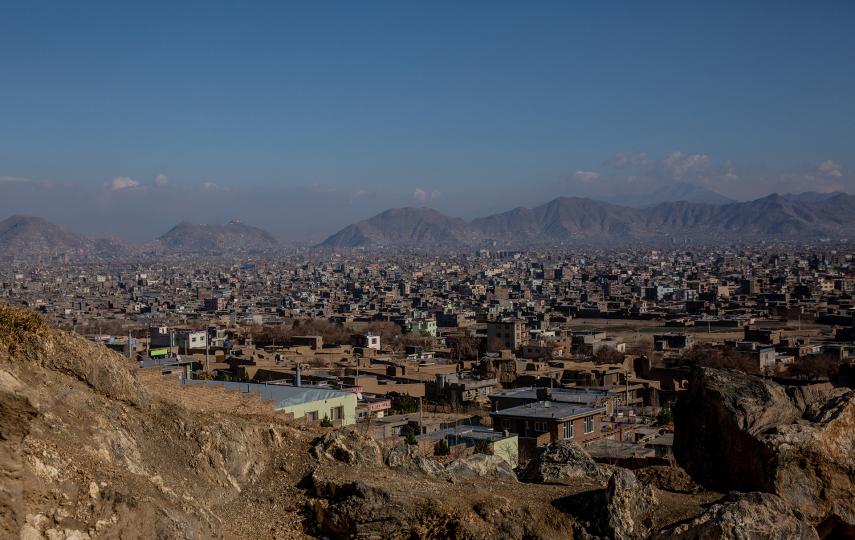“Physical infrastructure, land-planning and the size of informal settlements are the biggest factors determining the impact of disasters on cities,” said N.M.S.I. Arambepola, director of Urban Disaster Risk Management with the Asian Disaster Preparedness Centre in Bangkok. “With so many people migrating to the cities, many of the most vulnerable urban populations settle in the more disaster-prone areas where no one else wants to live.”
The disparity between well-planned and well-built wealthy cities, and poorer ones, - called the “urban risk divide” by the International Federation of Red Cross and Red Crescent Societies (IFRC) in its 2010 World Disasters Report - is especially acute in Asia, where someone in the Philippines is up to 17 times more likely to be killed by a natural disaster than someone in Japan, although the likelihood and frequency of disaster in Japan is higher overall.
With seven of the 10 most populous cities in the world, and an urban population expected to double from 1.36 billion to 2.64 billion by 2030, according to the UN Population Fund, the UN’s 2010-2011 disaster reduction campaign focusing on making cities more resilient is particularly relevant for Asia.
Tropical storms, floods, earthquakes and melting glaciers threaten urban populations in Asia, but where are some of the most dangerous cities to live if a natural disaster strikes?
Kathmandu, Nepal: Every year, settlements in Kathmandu valley experience floods and landslides but Kathmandu itself (population 1.5 million) is at particular risk. Records show that an earthquake happens every 75 years in the city. The last one, in 1934, killed almost 20,000. Scientists are expecting another quake of about eight on the Richter scale, which according to the Nepal Red Cross Society (NRCS) would kill at least 50,000 people and leave an estimated 900,000 homeless. The surrounding Himalayan peaks and limited number of roads in and out of the valley would make relief efforts very difficult.
Manila, Philippines: Eighteen million residents of the Philippines largest city live in a coastal area prone to flooding during the June-November rainy season. Located in the “Pacific Ring of Fire”, Manila residents are also at risk of volcanic eruptions, tsunamis and earthquakes, and are exposed to about 20 cyclones a year. The growth of slums, estimated to house almost three million people, according to the UN Human Settlements programme (UN-HABITAT), is particularly at risk of flooding and landslides.
Dhaka, Bangladesh: Almost 30 percent of the 14 million people in this city live in slums along the water’s edge, exposing them to flooding. The Stanford-based earthquake disaster risk index lists Dhaka as one of the 20 most vulnerable cities in the world to earthquakes.
Mumbai, India: The fourth largest city in the world with 20 million people, and 6.7 million slum dwellers, according to the World Health Organization (WHO), is also one of the top 10 most vulnerable cities in terms of floods, storms and earthquakes. According to the UN International Strategy for Disaster Reduction (ISDR), Mumbai is the most vulnerable in the world in terms of total population exposed to coastal flood hazard; it is among the world’s top six cities most vulnerable to storm surges; and it lies on an earthquake fault-line. Like many of Asia’s coastal mega-cities, most of the city is less than a metre above sea-level. With Mumbai accounting for almost 40 percent of the India’s tax revenue, any serious catastrophe here could have drastic economic consequences for the country.
Jakarta, Indonesia: Forty percent of the land area of Jakarta is below sea-level. As a result, its 10 million inhabitants are at risk of flash floods, particularly along the 13 river systems which pass through the Jakarta region. Jakarta also has a moderate risk of earthquakes due to the country’s location along the Indo-Asia subduction zone. With 60 percent of the nation’s money circulating in this city, any serious disaster would have country-wide economic effects. Furthermore, the high population density, averaging 14,000 people per square kilometre, a significant portion of which are slum-dwellers, increases a disaster's potential to cause harm.
Sources: ISDR, Nepalese Red Cross Society, Earthquake Disaster Risk Index, UN-HABITAT, IFRC, WHO, Geoscience Australia
cm/cb
*title amended on the 20th October 2010
This article was produced by IRIN News while it was part of the United Nations Office for the Coordination of Humanitarian Affairs. Please send queries on copyright or liability to the UN. For more information: https://shop.un.org/rights-permissions





